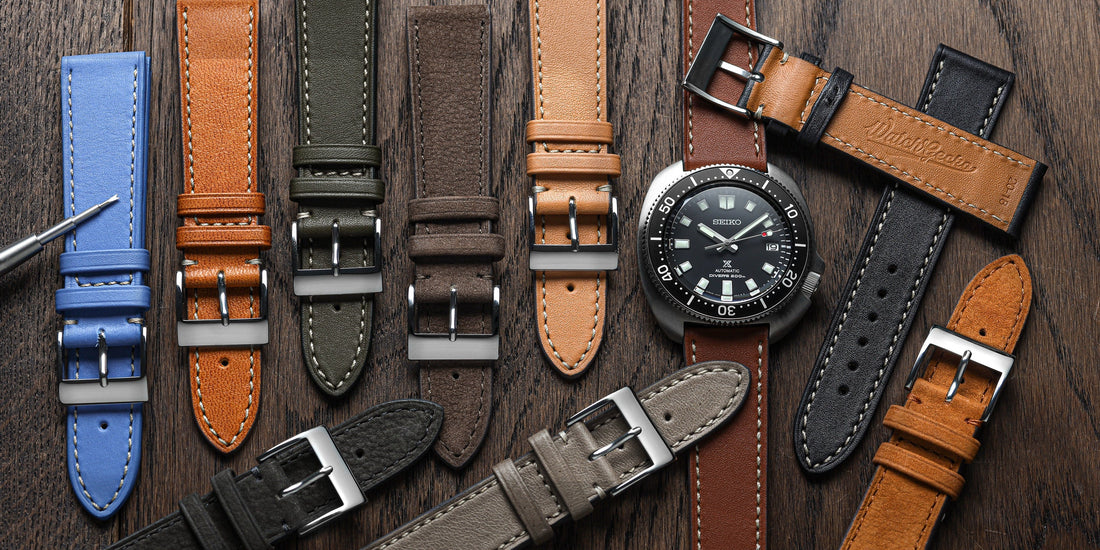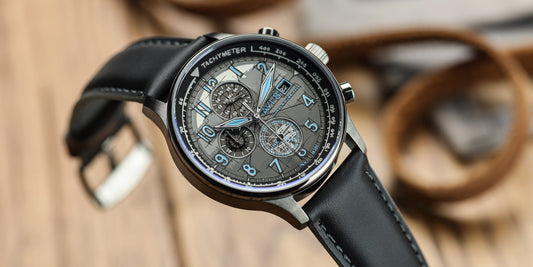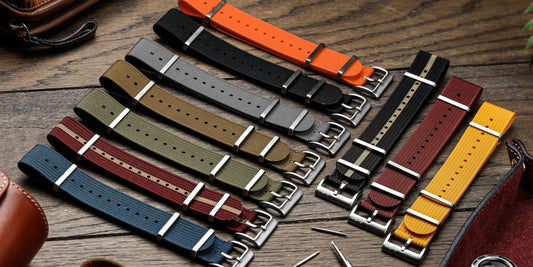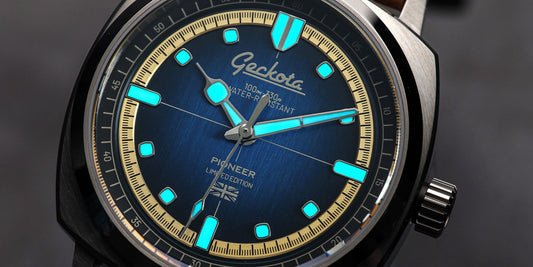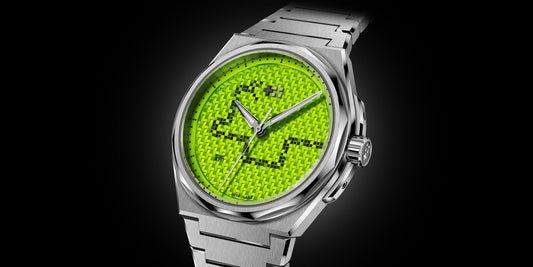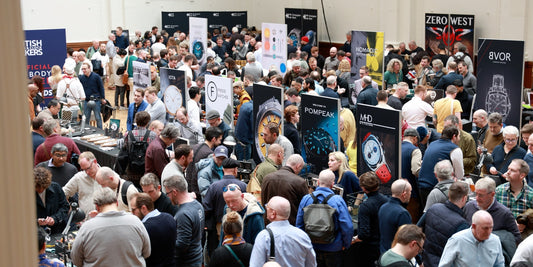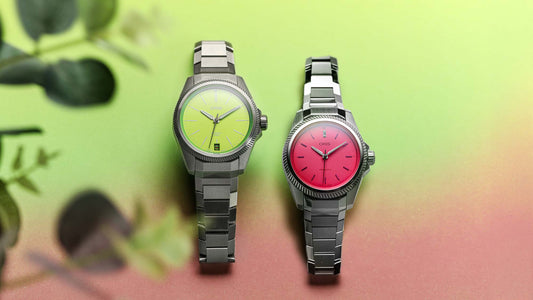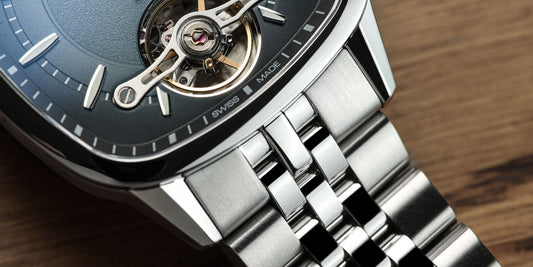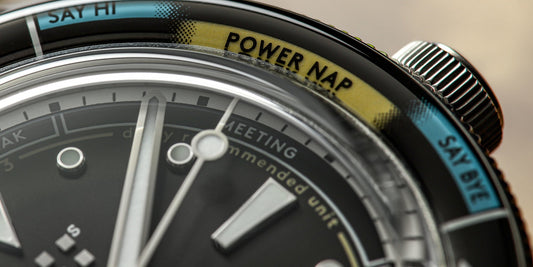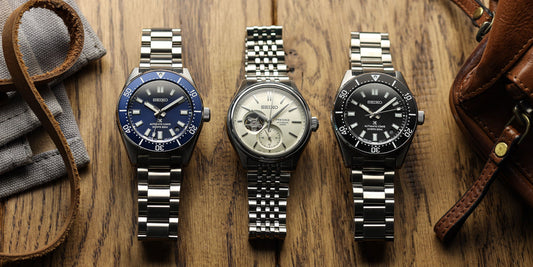If you’re here, you might be wondering how leather straps are made, who makes them, which tools are used what types of leather watch straps are made from, or how the tanning process is completed. Read on as we reveal all in this one-stop guide to the art of crafting leather straps and be sure to check out WatchGecko’s extensive range of premium quality leather straps whilst you’re here.

One of our trusted suppliers, the family-operated LIC leather company, are located within the picturesque city of Ostend, Belgium. The “Leather International Cuir” has long established itself as a luxury leather watch strap maker, having been founded in 1971 by Yves Thomas, a talented craftsman who had previously worked for the leather atelier at Hermes.
More recently his son Xavier, also a former student of Les Ateliers Grégoire, took over the management of the company and expanded its international presence, stocking luxury leather watch straps in some of the most prestigious boutiques in the world.
LIC have a heritage tied to the art of dressing watches, with a passion for beautiful colours and materials combined with exceptional craftsmanship but every strap they create starts out the same way…

How is a leather watch strap made?
Receiving and checking the leather
Calfskin and alligator are the most common leathers LIC work with, though the stockroom holds a much larger variety. "Our range includes about 25 varieties including some exotic leathers such as python, ostrich, salmon or buffalo to name a few examples", explains production and purchasing manager Xavier Thomas. "Moreover, these varieties are also available in different finishes and colours. We are now also experimenting with apple leather as a vegan alternative." LIC-Leather gets the bulk of its skins directly from French and Italian tanneries, thanks to their long-standing relationship LIC is able to provide an extensive range of leathers in a variety of finishes and colours.
Punching, splitting, and scaling
A punching machine divides the hides into smaller sheets. In the preparation phase, the leather is also split. "The leather that arrives here has a thickness of about 2 to 3 millimetres," says Xavier Thomas. "That is too thick. In the splitting machine, the leather is cut in the middle so that we get a leather thickness of about 0.8 millimetres." Then the leather is also scaled. "Towards the ends of the straps we gradually shave off a bit of the leather to get a smooth line around the fur," Thomas explains.
Assembly
A watch band consists of a top leather layer, a filling, a reinforcement and a lining, usually an anti-allergic leather type. These parts come together in the assembly. They are joined, glued and pressed together.
The final cut
The straps must now be cut to the right size. This is done with a small punching machine. "We have more than two hundred moulds," says Xavier Thomas. "Our watch bands are available in four lengths and about ten widths between 10 and 24 millimetres." There's a wide variety of styles to choose from, from your typical padded straps to ‘Bund’ straps (thick leather straps that act as a layer between the skin and the metal watch, traditionally used by pilots in bomber aircrafts) and intricately double-stitched designs.
Stitching and dyeing
The watch straps then move through to the stitching department. "If you use extra strong glue, in theory, stitching is not necessary," says Thomas. "But it still gives an extra reinforcement. It also has a visual aspect. By using specific stitching, you can also personalise a watch strap. There are watch connoisseurs who recognise a watch by the stitching on the strap." Stitching is done by machine, but at the request of some prestigious brands, LIC also delivers hand-stitching. After stitching, the sides of the straps are lightly sanded and then painted in the same colour as the watch strap.
Handmade loops
"The making of the loops that are applied over the watch strap is very specialist handwork and involves several of the above steps done by one person in one workstation. This is done by one of our employees that has been part of the LIC family for more than 40 years now" says Thomas.
The finished product
Now this is a very simplified layout of LIC’s production, there are in fact over 100 steps in their traditional process to go from leather hide to finished watch strap. Every step requires gentle manual operations and extraordinary attention to detail. The finished straps are all unique pieces with slightly varying leather patterns, with the team at LIC always striving to offer the best possible raw materials and craftsmanship.
Check out this video on the WatchGecko YouTube Channel to get a closer look at the crafting process from start to finish:
Within our premium Leather Watch Strap range, you can find many expertly crafted LIC strap collections:
Boutsen
Cavallo
Durbuy
Laverton
Leuven
Mozet
Ostend
Rochefort
Winslow
What types of leather watch straps are there?
Pull-up
Is a natural leather that will lighten in colour when stretched. A "Pull-Up" leather would typically have a very natural "lived in" look with natural grain patterns and visible markings. It can be quite difficult to maintain and can become distressed easily with potential colour transfer problems.
Oil/Waxed Pull-Up
Like usual pull-up leather it lightens when stretched and has either an oil or wax coating.
Full-Aniline
This type of leather has been dyed by immersion and has not received any coating of pigmented finish. This is a natural or dyed leather finished by application of a coherent surface coating which is clear or coloured with dye for a visually pleasing final look.
Semi-Aniline
This leather has received a base coating of pigmented finish, but later coats contain only dye, or contrasting pigment. This is to give a two-tone appearance, designed to imitate aniline leather.
Pigmented
The surface of a pigmented leather has had coloured particles applied to it along with a binder. This is the most common type of leather.
Rub Off
This is a pigmented leather with a rub off finish. There are two colours visible in rub off leathers, a base colour (a bright colour) and a top colour (a darker colour). The way in which these leathers are made allows the base colour to show through the dark top colour creating an antique look.
Bi-Cast
This is either a "finished split" or "coated leather" which has had a polyurethane film bonded to the surface.
How is the leather tanned?
First of all, tanning is the process of treating leather so that it can be used to make products. It stabilises it and stops the leather decomposing, makes it more durable, but also pliable and will sometimes colour the leather before it can be made into other things. Leather has been used for thousands of years to make clothing, water carriers, shoes, armour and so on. There are two most popular types of tanning processes, one being chemical or chrome tanning and the other being vegetable tanning. Here we’ll discuss the differences between these two processes and the advantages and disadvantages of each one.
The Tanning Process

Hides need to be prepared before they can be put through the tanning process. This includes removing hair, de-greasing and importantly soaked in salt to kill bacteria which stops the processes of putrefaction and absorbs moisture within the hide; this is called Curing. Curing can be done either by placing the hides in salt and sealing them for a month or so or soaking them in brine baths. They are then ready to be immersed in a tannin bath. The aim of this bath is to turn the hide into a durable, pliable product to work with. It stops the hide from putrefying and decomposing over time and gives the hides rich hue colours and shades.
This is where the chemical or vegetable aspect comes in. The bath will either contain natural vegetation to treat the hide or it will be a chemical bath. The vegetable soak takes a longer period of time (sometimes months) to affect the leather because of its lower concentration, whereas the chemical version can be done in 24 hours because of the stronger acidic ingredients.


What is the difference between Vegetable tanning and Chemical tanning?
The clue is really in the name. Chemical tanning includes a variety of chemicals, with the most traditional one being 'Tannin' (where the name comes from) and 'Chromium' which was used by tanners in the industrial revolution. This is also a quicker process of tanning hides, so it has been adopted by many companies due to the ease and turnaround of treated leather. This method creates the same end result, and the appearance of the leather will continue to stay the same for a long time after.
Vegetable tanning uses natural materials and substances to treat the leather. 'Tannin' can be found at varying levels of concentration naturally in vegetables and other plants which is why this process is successful. It is an extremely old and traditional method that doesn't just use vegetables as the name suggests but tree barks and other natural substances to create rich, warm and earthy tones that are different every time. People with chemical sensitivities might find this particular method much more suited to their skin, depending on the origin of the tannin. Vegetable tanning creates different end results each time and the appearance of the leather is much more akin to its former self, with lines and creases that form a natural patina over time, but with added durability and longevity.

Did you know?
This strap uses certified vegetable-tanned, full-grain Italian leather produced by a member of the Consorzio Vera Pelle Italiana Conciata Al Vegetale . This consortium of tanneries in Tuscany exclusively uses natural plant-derived tannins and centuries-old techniques to create quality controlled sustainable leathers . As a result, this strap will continue to develop patina and only get better as it wears in and begins to age. We guarantee that we use certified leathers from these tanneries, and to read more about these certified responsible Italian tanneries click here .
What are the advantages and disadvantages?
Chemical tanning: -
It is a very quick process that takes little to no human interaction and uses vast machinery.
Can get bold, bright and vibrant colours that vegetable tanning cannot achieve.
Colours will remain solid and uniform throughout the strap.
The environmental impact is very high because of the use of chemicals that cannot be disposed of easily.
The leather stays untouched for many years and doesn't form patina as vegetable tanned does.
Loses some natural character when it is tanned.
The chemicals used in this process can upset sensitive skin.
Vegetable tanning: -
It takes a long time for skins to be tanned in this way, sometimes a period of months.
Vegetable tanning gives each piece individual characteristics and there will always be a different end result.
This method is based on ancient tradition and takes a skilled tanner to complete the process.
The colours aren’t so striking and bold with vegetable tanning, instead creating earthier natural tones.
This method gives the leather a natural patina over time and ages with the user.
The environmental impact of this method is much lower and tanning fluids can be disposed of more easily than chemical tannin.
Using natural matter helps towards anti-allergenic leathers with no chemical sensitivities.
Overall, there are pros and cons to vegetable and chemical tanned leather and deciding which process will suit your tastes depends on a few elements, but mainly what finish you would like to achieve at the end.
The vegetable tanned leather is a joy to wear because of how it ages with the wearer, forming natural patina and developing character. On the other hand, the bold and vibrant colours that you can achieve with chemically tanned leather are hard to beat; perhaps you want to make a statement and bring a pop of colour on your wrist that won't fade. It does depend entirely on usage and preference, so it is good to research your leathers prior to purchase.
We have plenty of certified vegetable tanned leather straps here at WatchGecko. They are made from Genuine Leather that has been treated using only vegetable matter and plant extracts, rather than chemical substances.
